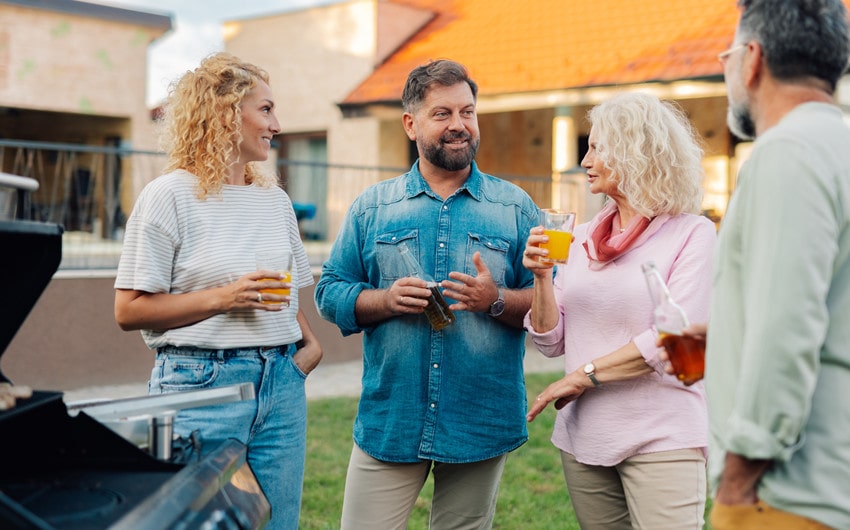5 Factors That Determine the Safety of a Neighborhood
Atlanta blends history, culture, and unique neighborhoods, from the tree-lined streets of Virginia Highland to the lively shops and cafes of Midtown. Each area has its own personality and provides a safe, welcoming home for residents and renters alike. Choosing a secure neighborhood enhances daily comfort, offers long-term peace of mind, and helps maintain property value.
When looking for a place to live, focusing on the safest neighborhoods in Atlanta can help narrow your options and ensure a comfortable, secure environment. These areas often feature low crime rates, good lighting, active community engagement, proximity to emergency services, and thoughtful environmental design.
By combining research with firsthand observation, you can find a neighborhood where you and your family can thrive. Here are the factors that determine the safety of a neighborhood:
Assessing Safety
When looking for a neighborhood, consider community engagement, and nearby amenities.
Areas with active watch programs, quality infrastructure, and nearby amenities tend to be safest and are ideal for families or anyone moving to a new home. Make a checklist of these factors to compare neighborhoods effectively.
Crime Rates
Low-crime neighborhoods naturally pose fewer threats to personal safety and property. Checking local police reports, online crime maps, and community safety dashboards helps you understand crime frequency, such as theft, assault, or vandalism.
Neighborhoods with minimal criminal activity promote peace, stability, and allow for walking, cycling, or leaving homes unattended without fear. Visiting the area at different times of day also gives a realistic sense of safety. Talk to local residents to get firsthand insight into crime patterns.
Lighting and Street Visibility
Well-lit streets and clear visibility reduce crime risks and promote safety. Proper lighting helps pedestrians, cyclists, and drivers spot hazards or suspicious activity. Clear sidewalks, few blind spots, and maintained public spaces reduce opportunities for crime and make it easier to get help in emergencies.
Observe the neighborhood at night to see if lighting and visibility feel sufficient. Pay attention to areas like alleyways, parking lots, and parks, as these are often less well-lit and can pose safety risks.
Community Engagement
Neighborhoods with active residents are safer. Watch programs, committees, or attentive neighbors help spot and report suspicious activity quickly. Strong community involvement builds trust and support.
Joining local online groups, attending meetings, or volunteering helps newcomers stay aware of safety issues. Attend a neighborhood meeting or join a local social group to get involved and stay informed.
Proximity to Emergency Services
Being close to police stations, fire stations, and hospitals improves safety. Faster response times can prevent crime escalation, reduce fire or accident damage, and provide timely medical care.
Neighborhoods near emergency services often have better infrastructure, such as roads and communication systems, which adds to overall safety. Note the locations of nearby emergency services when evaluating a neighborhood.
Environmental Design
Thoughtful neighborhood design promotes safety. Well-maintained homes, clear sidewalks, visible entrances, and secure fencing reduce crime opportunities and improve comfort. Traffic-calmed streets, open communal spaces, and pedestrian-friendly areas encourage natural community surveillance.
Simple actions, like clearing blocked sidewalks or pruning overgrown bushes, can enhance both actual and perceived safety. Security features such as cameras or foot patrols also help. Look for neighborhoods with visible upkeep and maintained public spaces for added security.
Conclusion
Neighborhood safety is more than statistics. Pay attention to lighting, community involvement, emergency services, and the overall atmosphere. Walking or driving through neighborhoods at different times and talking to residents gives valuable insight. Combining observation with research ensures you choose a neighborhood where you and your family can feel secure and thrive.
Key Takeaways
- Choosing a secure neighborhood improves daily comfort and protects property value.
- Assess safety by considering crime rates, lighting, community involvement, and nearby amenities.
- Low-crime areas reduce risk and promote peace and stability.
- Well-lit streets and clear visibility make neighborhoods safer.
- Active community engagement helps spot and prevent suspicious activity.
- Proximity to police, fire stations, and hospitals improves emergency response.
- Thoughtful environmental design and maintained public spaces reduce crime opportunities.
- Visiting neighborhoods at different times and talking to residents gives valuable insight.







